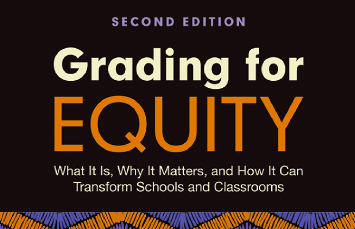With 25+ years of practice and research behind him, Joe Feldman—a former teacher, principal and district administrator—speaks from experience when it comes to the ongoing inequities and challenges that districts and schools have with grading. In this conversation with eSchool News, Feldman, author of the recently updated Grading for Equity, discusses the importance of equity in education, particularly in the context of grading practices. He emphasizes how the COVID-19 pandemic and events like the George Floyd protests highlighted the need to address these inequities, explains the flaws in traditional grading practices, and advocates for the need for change. He also explores how technology can aid in more accurate, unbiased, and motivational assessment methods. Have a listen and scroll down for some other takeaways, and an excerpt from his book:

➔Traditional grading practices have flaws, including inaccuracies, biases, and demotivation, and the pandemic has exposed these shortcomings, prompting educators to reevaluate their grading methods.
➔Technology can offer benefits in assessment by providing support for generating questions and allowing students to demonstrate their knowledge in various ways. It can help reduce the limitations of traditional assessments.
➔To implement equitable grading practices in schools, it is essential to provide teachers with access to research and support to change their grading methods. Understanding the “why” behind these changes is crucial for successful implementation.
To download the first chapter of Grading for Equity, click here. Below is an excerpt:
First and foremost, this book is for teachers. They are the professionals most responsible and most intimately involved with grading our students, and therefore are in the most powerful position to make grading practices more equitable. As a former (and therefore, lifelong) teacher, I know that most of our work as teachers in a school is isolated—we work in separate rooms, teach different courses, rarely share the same groups of students, and have very different daily teaching schedules (and “prep” periods)—which means very few opportunities to chat with each other, much less to engage each other in deep pedagogical discourse.
I write this book to support a critically important conversation that helps teachers to be more informed and conscious of the impact of our traditional grading practices, and that prepares them with the understanding and strategies to implement more equitable practices. This book is also for those accountable for the grades students receive—school and district administrators, board members, and other officials. This book will give you a clearer sense of the urgency to improve traditional grading and can inform your vision about how more equitable grading will improve passing rates, reduce grade inflation, strengthen instruction, and even save money. Improved grading can be a lever for systemwide efforts to promote more equitable opportunities and outcomes for students, particularly those most historically disadvantaged. In your non-teaching role, you can encourage, normalize, support, and demand a critical conversation about grades, and to provide the inspiration, the incentives, the resources, and the “cover” to those who are part of that conversation. Considering the amount of professional development we provide teachers on curriculum design and instructional planning, how can we not invest resources in improving how teachers grade?
For parents and caregivers, conversations about children’s grades are so important and yet often intimidating. By strengthening your understanding of grading, you become more qualified to be true partners in your child’s education. Perhaps you can apply some gentle pressure on schools, and then partner with them, to improve their grading. This book also can be informative and empowering to students and their advocates, to pull back the curtain on a system that directly and profoundly affects them. Rather than be only the recipients of grades, students can be active in a community-wide discussion about how to grade more equitably.
- Meet the Winners—Dr. Kellie Wilks, Chief Technology Officer, of Ector County Independent School District, TX (ECISD) - April 12, 2024
- Meet the Winners—Prince William County Public Schools (PWCS) in Manassas, Virginia wins the 2024 Community Leadership Award for Digital Equity. - April 12, 2024
- #CoSN2024 Conversation – Tom Ryan Co-Founder K-12 Strategic Technology Advisor Group (NM) - April 10, 2024

